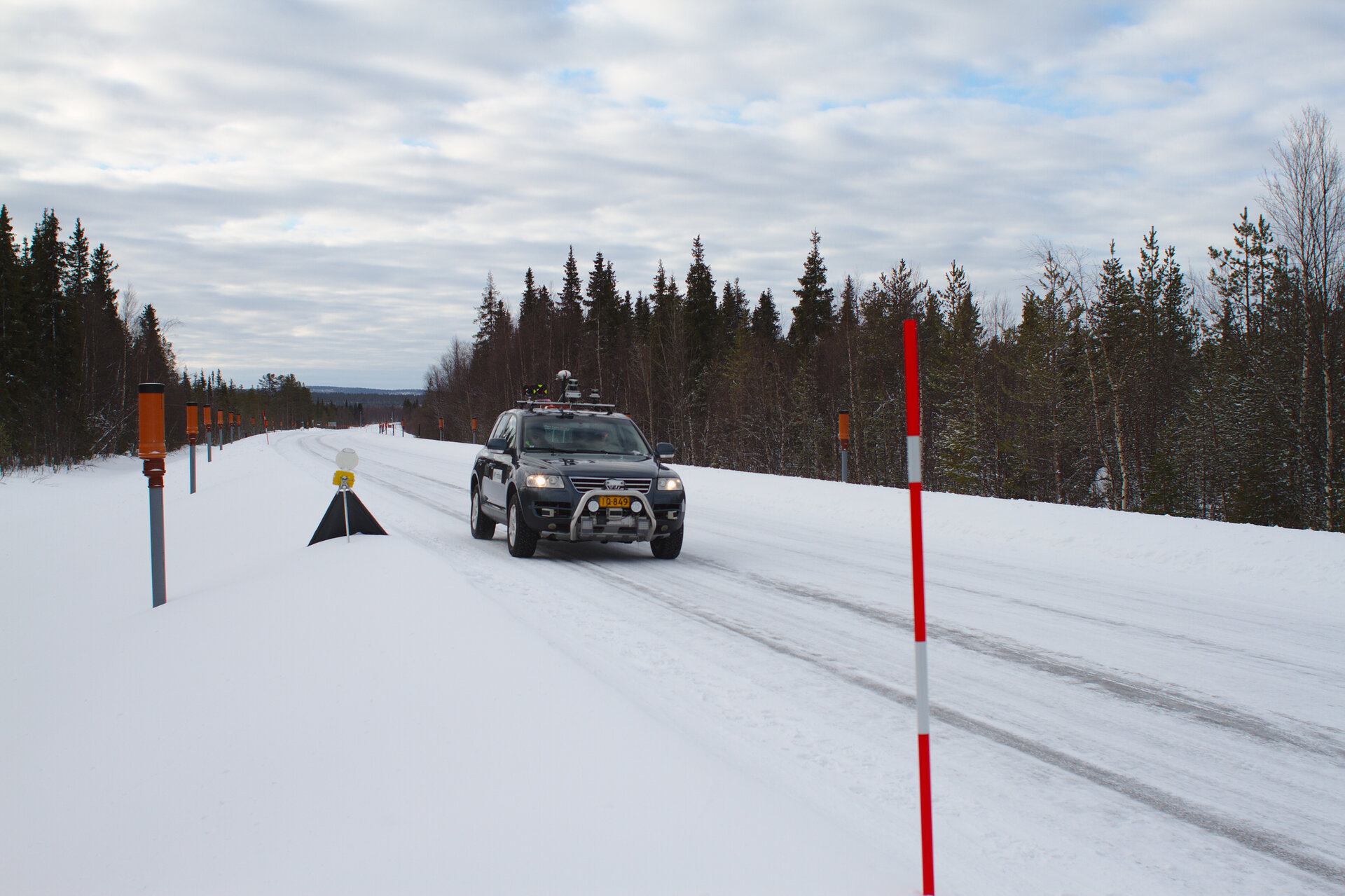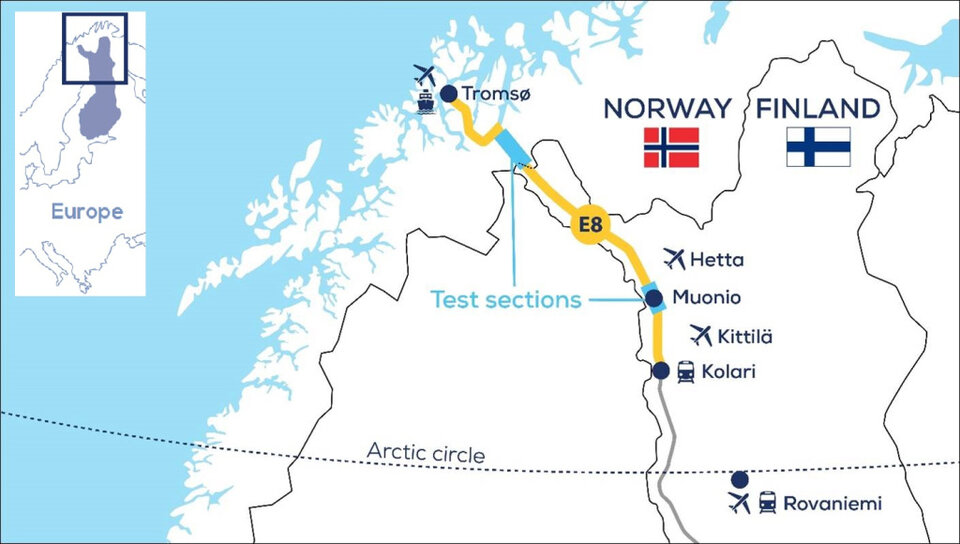How two stretches of road in Arctic Norway and Finland are paving the way for safer driving
The highways in northern Fennoscandia are helping engineers gain key insights into how self-driving cars perform in winter conditions.

The next — or perhaps the first — time you allow your self-driving car to get you to your destination, you may be able to thank its ability to navigate in conditions like fog, mist, snow and poor connectivity to research carried out on two stretches of the E8 motorway in northern Finland and Norway.
Automakers have for years conducted winter testing on the tracks and roads of northern Scandinavia. Sweden alone boasts 25 winter test facilities where the Swedish Proving Ground Association, an industry group, reckons 100,000 cars are put through their paces each winter. In the town of Arjeplog, a hub of activity of this sort, winter car testing generates an estimated $150 million a year in direct and indirect revenue.
The pace of testing has only accelerated as automakers roll out the next generation of vehicles. While all-electric and hybrid vehicles function well enough in temperate climates, engineers are still trying to fully understand how cold weather affects things like batteries and the electric motors they power. For autonomous vehicles, the concern is how their sensors that tell them where they are on the road and how close they are to other cars react to cold and low-visibility situations. The region is also ideal for testing how navigation systems function in an area where both satellite and mobile connectivity are spotty.
This testing has been able to move from closed track to the real road is, in part, thanks to a Finnish-Norwegian project known as Aurora Borealis. Since 2017, Finland has been operating a 10-kilometer stretch of roadway, nicknamed Aurora, and Norway a 40-kilometer stretch called Borealis, that transport authorities in the two countries hope will give insights into autonomous-vehicle performance in the challenging conditions of the North.
[Car testing in the North: Range excitement]
The two sections of road, described by Gunn Sissel Dobakk, who is heading the Borealis project for Statens Vegvesen, which manages national and county roads in Norway, as “research stations in asphalt,” are kitted out with all manner of equipment, including cameras, lidar (a sensing technology similar to radar that uses lasers instead of radio waves) and antennas. Embedded in the roadway itself are power cables, fiber-optic lines and pressure sensors, all of which provide information about road-surface conditions and the speed and type of vehicles driving along it.
One reason for creating the testing sites is to allow engineers to test the technologies that will underpin driverless cars in real-world conditions. Precipitation in the air causes trouble for positioning sensors, according to Sarang Thombre of the Finnish Geospatial Research Institute, which was responsible for installing the equipment used there. Ice and snow on the surface of the road, meanwhile, can make it difficult for cars to sense things like lane markers or to communicate with it the sensors embedded in the asphalt. Before cars can become fully autonomous, the technology will need to be able handle both of these problems consistently. The same is true of being able to operate in cold weather, as anyone who has tried to use a smartphone on a cold day can attest.
But while improving passenger car technology for the benefit of the auto industry is one obvious use for the two sections of road, their more immediate, and perhaps important, application may be in helping drivers making their way along this and other dangerous stretches of roads.

This part of the E8 motorway, which connects Tromsø, Norway, in the north, with Helsinki, Finland, in the south, is just one of several such test sites in both countries.
It was chosen for two reasons: first, because it is hilly, curvy and, in the winter, snowy — making it a challenging drive for humans and computers alike; second, because of its economic importance and the makeup of the traffic using it. Much of the fish from northern Norway that is exported to the markets in the east is sent via Helsinki. When the project began in 2017, a quarter of the vehicles travelling through this area were trucks and other heavy vehicles, a 70 percent increase from 2010, according to Statens Vegvesen, Norway’s roads agency.
By allowing trucks — and cars for that matter — to communicate with each other and the road, it is hoped that the number of accidents can be reduced. It could, however, also have an economic benefit, since it may make possible a type of driving known as platooning, in which a column of vehicles is able to follow each other much more closely and mostly autonomously because they are constantly aware of the speed and position of the ones in front of it, as well as road conditions. The smaller gap between vehicles reduces the amount of wind resistance and thus the amount of fuel needed.
According to Reija Viinanen, the Finnish director of the Aurora part of the project, any new findings the roads lead will benefit “safe and smooth transport.” That would be an advancement in more respects than one.
https://vimeo.com/272738515